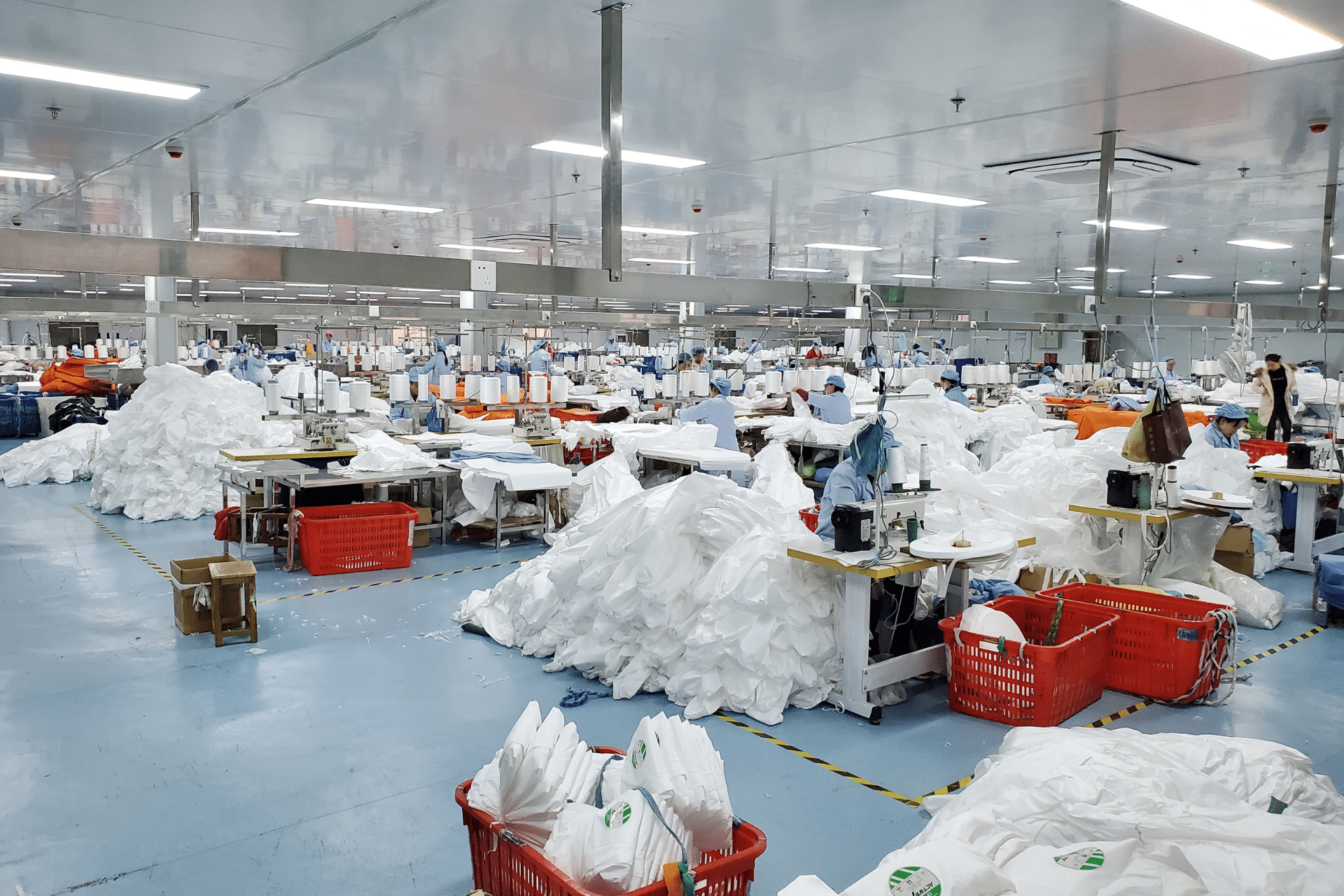В сфере средств индивидуальной защиты (СИЗ) лицевые маски FFP классифицируются по уровню защиты от частиц, находящихся в воздухе. Эти маски широко используются на рабочих местах, в медицинских учреждениях и в среде, где могут присутствовать пыль, дым и другие твердые частицы. FFP означает Filtering Face Piece, и маски делятся на три основные категории: FFP1, FFP2 и FFP3. Каждый класс обеспечивает различный уровень эффективности фильтрации и защиты. Вот что означает каждая категория:

1. Маски для лица FFP1
Лицевые маски FFP1 обеспечивают самый низкий уровень защиты по классификации FFP. Они предназначены для фильтрации не менее 80% частиц, находящихся в воздухе. Эти маски обычно используются в условиях, где воздействие вредных частиц относительно невелико, например:
- Пыльная среда: Строительные площадки, деревообработка и уборка.
- Нетоксичные частицы: Эти маски защищают от слабых раздражителей, таких как пыль или неопасные частицы.
Хотя маски FFP1 обеспечивают базовый уровень защиты, они не подходят для работы в условиях с высоким содержанием токсичных или инфекционных частиц в воздухе. Они часто используются для общей защиты в сценариях с низким уровнем риска, где опасность попадания частиц в воздух минимальна.
2. Маски для лица FFP2
Лицевые маски FFP2 обеспечивают более высокий уровень защиты по сравнению с FFP1. Они фильтруют не менее 94% частиц, находящихся в воздухе, включая более мелкие частицы, такие как промышленная пыль, дым и аэрозоли. Маски FFP2 часто рекомендуются для использования в среде, где риск воздействия потенциально вредных частиц умеренный. Эти маски обычно используются в:
- Медицинские учреждения: Они обычно используются для защиты от вирусов, передающихся воздушно-капельным путем, включая грипп или респираторные заболевания, такие как COVID-19.
- Промышленные условия: Работники, имеющие дело с частицами пыли среднего размера или химическими испарениями.
Маски FFP2 более эффективно фильтруют вредные частицы по сравнению с масками FFP1 и обычно используются в условиях повышенного риска, обеспечивая повышенную защиту как от нетоксичных, так и от вредных частиц, находящихся в воздухе.
3. Маски для лица FFP3
Лицевые маски FFP3 обеспечивают самый высокий уровень защиты по классификации FFP. Они отфильтровывают не менее 99% частиц, находящихся в воздухе, включая очень мелкие частицы, такие как вирусы, бактерии и вредные аэрозоли. Эти маски обычно используются в ситуациях, когда работники подвергаются воздействию среды с высоким риском и опасных веществ. Общие области применения включают:
- Медицинские учреждения: Маски FFP3 используются для защиты от высокоинфекционных заболеваний, таких как туберкулез, атипичная пневмония или COVID-19. Их часто носят медицинские работники, лечащие пациентов с инфекциями, передающимися воздушно-капельным путем.
- Промышленные условия: Работники, занятые в отраслях, связанных с токсичными испарениями, асбестом или химическим воздействием, полагаются на маски FFP3 для максимальной защиты.
Маски FFP3 - это самые защитные лицевые маски из всей линейки FFP, что делает их незаменимыми в условиях, где требуется высочайший уровень фильтрации воздуха для предотвращения воздействия опасных веществ.
Основные различия между масками FFP1, FFP2 и FFP3
| Тип маски | Эффективность фильтрации | Уровень защиты | Общее использование |
|---|---|---|---|
| FFP1 | Не менее 80% | Базовая защита от низких уровней нетоксичных частиц | Легкая пыль, деревообработка, общее строительство |
| FFP2 | Не менее 94% | Умеренная защита от вредной пыли, паров и вирусов | Здравоохранение (грипп, COVID-19), промышленные предприятия со средним уровнем воздействия |
| FFP3 | По крайней мере, 99% | Максимальная защита от очень мелких частиц, вирусов и бактерий | Здравоохранение (туберкулез, COVID-19), работа на производстве с токсичными парами или химикатами |
Почему важны маски для лица FFP?
Маски FFP необходимы, поскольку они защищают пользователя от вредных частиц, вирусов и бактерий, находящихся в воздухе. Эти маски особенно важны в условиях, когда воздействие опасных веществ может привести к серьезным рискам для здоровья, включая респираторные заболевания, инфекции или долгосрочное повреждение легких.
Заключение
Подведем итоги:
- Маски FFP1 обеспечивают наименьшую защиту и подходят для помещений с низким уровнем риска.
- Маски FFP2 более эффективны и широко используются в медицинских учреждениях и на производствах с умеренным воздействием вредных частиц.
- Маски FFP3 обеспечивают высочайший уровень защиты, часто используются в медицинских или промышленных учреждениях с повышенным риском.
Выбор правильной маски зависит от уровня риска в вашей среде. Для повседневной защиты маски FFP2 обычно используются в ситуациях, связанных с вирусами, в то время как маски FFP3 применяются при повышенном риске воздействия патогенов, передающихся воздушно-капельным путем, или опасных химических веществ.










